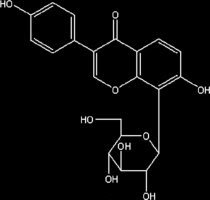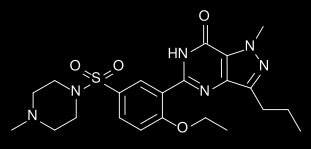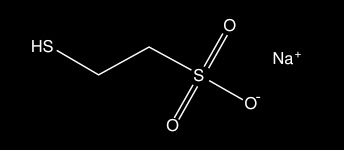It's true. Precious metals are used as drugs. As a complete and utter pharmacology nerd, I happen to think that this is awesome. Let me tell you some things.
Platinum
Platinum-containing compounds represent an important class of anticancer / antitumour / antineoplastic agents, the prototype of which is cisplatin (Platinol). Cisplatin was first synthesized in 1844, but it was not until 1965 that it's ability to inhibit cell division was discovered. Like the discovery of penicillin, it was made totally by accident.
A dude named Barnett Rosenberg was delivering electric current to cultures of bacteria as part of a series of experiments that he was doing. Rosenberg made the observation that the ability of the bacteria to multiply was inhibited in these cultures. It was soon realized that the inhibition of bacterial growth was due to the presence of platinum coordination complexes, among them cisplatin, in the cultures. These complexes were being generated by the platinum electrodes that were being used to deliver the electrical currents. After further investigation, cisplatin was found to possess anticancer activity in a number of different animal tumour models. It was first approved for human use in Canada in 1978, and is now employed worldwide against a number of different cancers, including: germ cell, ovary, bladder, cervix, head and neck, esophageal, gastric, prostate, lung (NSC), and neuroblastoma.
Platinum-containing anticancer drugs are alkylating agents, meaning that they react with the nitrogenous bases in DNA strands to cause the formation of cross-linkages within and between strands. It is thought that the resulting DNA adducts mess up cellular repair mechanisms, with the accumulating genetic damage activating apoptosis (controlled cell death) preferentially in fast growing cells such as cancer cells. As a result of their high level and broad spectrum of activity (effectiveness against a variety of different types of cancer), platinum-containing drugs based on cisplatin continue to be developed for use in the treatment of cancer.
Gold
Gold has a long and sordid (well, maybe not so sordid) history of being used medicinally in most cultures around the world. The Chinese used it as early as 2500 BCE. There are records dating back to 500 BCE of gold salts being used to treat leprosy. Indian physicians used various preparations containing gold as antiepileptic agents.
In the late 19th century, gold cyanide compounds were shown to kill Mycobacterium tuberculosis (the bacteria responsible for most causes tuberculosis) in test tubes but were found to be too toxic to use in people. Over the course of the 20th century, organogold drugs have been used (albeit often unsuccessfully) to treat a wide variety of autoimmune diseases, kala-azar, tuberculosis, and malaria. Gold-chloroquinone drugs are currently being developed to combat malaria.
Gold drugs have been shown to have anti-tumour, anti-HIV, anti-microbial, and anti-fungal activities. However, the primary therapeutic application for gold in today's world is in the treatment of rheumatoid arthritis. This is an incurable chronic inflammatory autoimmune condition that progressively destroys the articular cartilage that lines the surfaces of bones where they meet in joints. Since cartilage is necessary for joints to work, this disease can lead to the loss of joint function (i.e. the bones at the affected joint(s) fuse together). It is estimated that 1-2% of all people everywhere have this form of arthritis, and we still don't understand exactly what causes it. Rheumatoid arthritis is routinely treated with gold drugs, which have anti-inflammatory and other properties that help to combat the disease. In most cases, monovalent organogold salt formulations are injected into the joints. The use of gold drugs in this application is called chrysotherapy, and has been in use for over 70 years. The major side effect of these drugs is dermatitis. In the exciting and ever-so-controversial world of alternative medicine, gold needles are used by many acupuncturists in patients with rheumatoid arthritis.
Silver
Silver has long been employed as an antiseptic. The ancient Phoenicians used silver bottles to store their beverages to prevent them from spoiling. Alexander the Great reportedly would only drink from silver vessels. My homeboys Hippocrates (the dude who invented how to be a good doctor) and Paracelsus (hero to toxicologists everywhere) both noted the healing effects of silver in their writings. Once bacteria were discovered, silver was recognized to be effective at knocking them off. This lead to silver being used as an antimicrobial agent, which remains its primary therapeutic application to date. Silver is toxic to many bacteria, viruses, algae, and fungi. Yet it does not appear to pose a significant threat to human cells or humans as a whole. This selective toxicity makes silver a great antimicrobial agent, although we still don't understand the mechanism behind it.
K. S. F. Crede, a German obstetrician, is credited with introducing (in 1884) the practice of applying eye drops containing silver nitrate to the eyes of newly-born children to prevent them from becoming infected with gonorrhea (yeah, that STD we all know and love). Early on in the twentieth century, a surgeon by the name of William S. Halstead figured out that silver foil bandages for wounds helped to prevent the development of infection. These bandages, as well as topical creams containing silver salts, were used during World War I. With the development of systemically-acting sulfa drugs and penicillin, and the spread of their use worldwide following World War II, the use of silver as a general antimicrobial agent fell out of favour. It remains a mainstay in the treatment of burns, traumatic wounds, and diabetic ulcers. Ointments containing silver sulfadiazine (Silvazine and Flamazine) were the treatment of choice for controlling bacterial infections in patients with serious burns up until the late 1990s, at which point bandages containing slow-release silver compounds became popular. A 10% solution of silver nitrate has recently been show to be an effective treatment for warts.
Although silver, as noted previously, is essentially non-toxic to humans, it can cause a rare permanently disfiguring condition called argyria. Silver is absorbed into the blood and deposited in tissues, such that the skin, eyes, and mucous membranes acquire a grey to blue-black colouring.
http://en.wikipedia.org/wiki/Silver
Eisler R. Chrysotherapy: a synoptic review. Inflamm Res. 2003 Dec;52(12):487-501.
Kalant H, Grant D, and Mitchell J. Principles of Medical Pharmacology 7th ed. Toronto: Saunders Canada, 2006.
Lebwohl D, Canetta R. Clinical development of platinum complexes in cancer therapy: an historical perspective and an update. Eur J Cancer. 1998 Sep;34(10):1522-34.
Silver S, Phung le T, Silver G. Silver as biocides in burn and wound dressings and bacterial resistance to silver compounds. J Ind Microbiol Biotechnol. 2006 Jul;33(7):627-34. Epub 2006 May 25.



